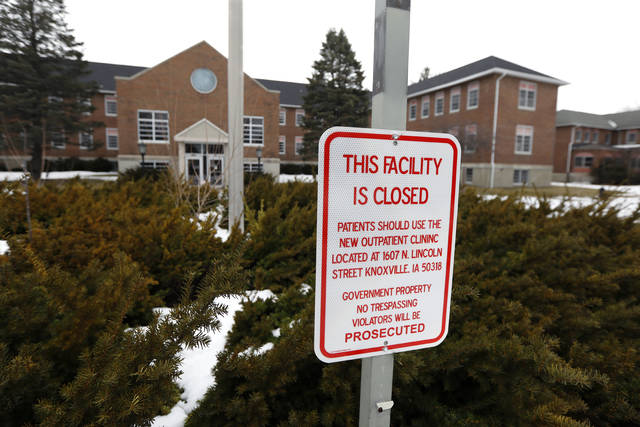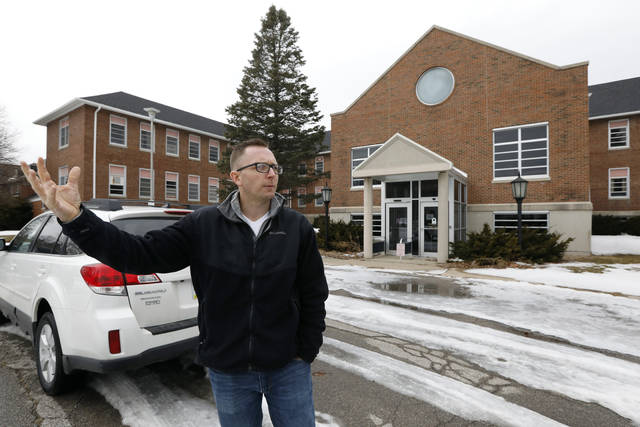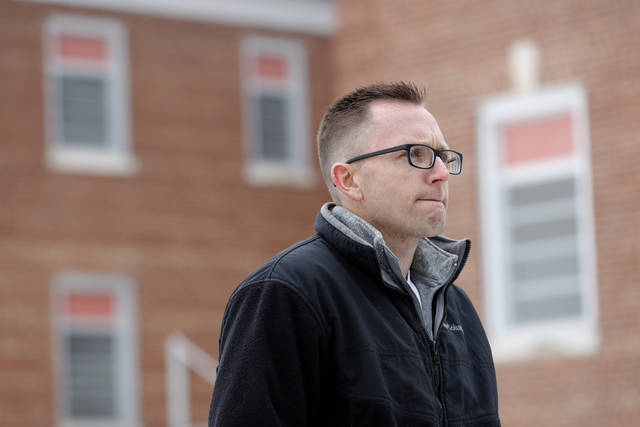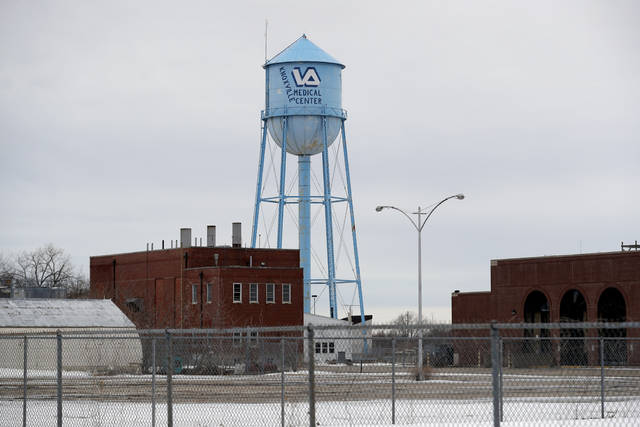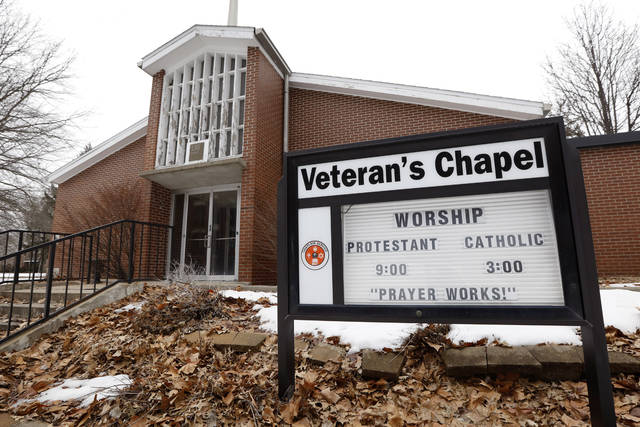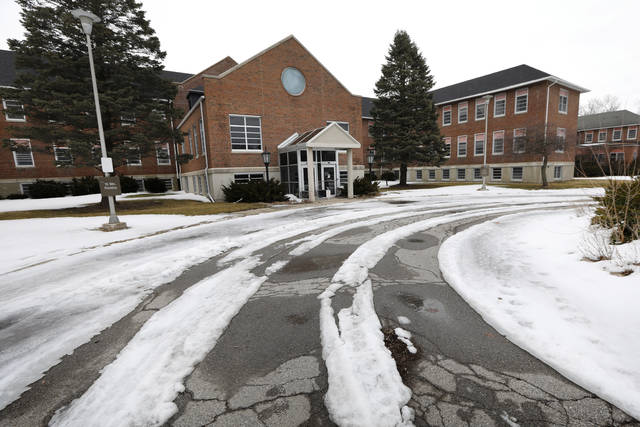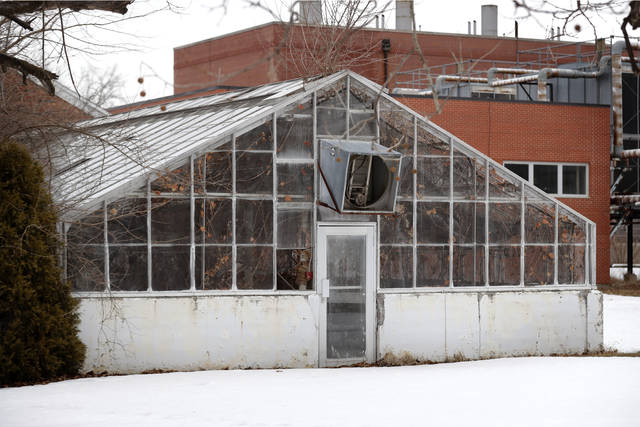Huge ghost town next door clouds Iowa city's future
KNOXVILLE, Iowa (AP) — Crunching slowly down snow-covered Liberty Lane between stately brick buildings, Brian Hatch can recall when the sprawling veterans’ center on the edge of his small Iowa town teemed with activity as patients walked the lush, tree-covered grounds and hundreds of doctors, nurses and other staffers kept the round-the-clock campus humming.
Apart from chirping birds and occasional dog walkers, there’s now only silence.
“It’s like a ghost town,” said Hatch, the mayor of Knoxville. But unlike relics of the old West with a few hollowed-out buildings decaying on the prairie, this ghost town has 39 buildings that until 2009 operated as a separate city. There’s a power plant, fire station, water tower, green houses, laundry and chapel, and even an old bowling alley fashioned from a Quonset hut.
Now this complex is not only dead, it’s dragging down the adjacent living city of 7,000, which has lost more than 10 percent of its population in the last decade and is desperate to free itself from the specter of the huge relic that clouds its future.
“It was a beautiful campus,” Hatch said. “Now the buildings are rotten. They’ve had raccoons living in them.”
But the government has no plans for it, and the city, even if it gets ownership, would somehow have to come up with the millions of dollars to demolish most or all of it.
Veterans Affairs oversees more than 6,000 buildings and in 2017 announced plans to clear a backlog of about 430 vacant structures scattered around the country. But the problem with the Knoxville center, which merged with a VA facility 40 miles north in Des Moines, appears unique, given the campus’ size and location in a community so small and with so few resources.
Across the country, bigger cities have found money for restorations or recruited developers eager to construct housing or office space in unique historic structures.
In Milwaukee, a $40 million project will begin soon to restore Old Main, a 152-year-old gothic-style building with soaring towers that has housed veterans since soon after the Civil War.
“It hasn’t been easy,” said Dawn McCarthy, the interim executive director of the Milwaukee Preservation Alliance, of the years-long effort that led to Old Main’s redevelopment as housing. “There were some bumps along the road.”
Other efforts are moving ahead in the Los Angeles area, where plans call for building hundreds of units for homeless veterans on a 388-acre VA campus, and near Cleveland where a developer plans to transform the former Brecksville Veterans Affairs Hospital site into apartments, retail and other uses.
But whereas millions of people live near those VA campuses, it’s a different story in Knoxville, a city with a vibrant square surrounding a towering county courthouse but one that like many rural communities has struggled economically and is eager to attract new investment. The city is relatively isolated, surrounded by farmland and roughly an hour’s drive along state highways from Des Moines.
After the Knoxville center’s closing, bank president Bob Wims joined with other community leaders to develop alternative uses for it, including as a college and housing, but none of the proposals went far. One stumbling block was that any purchaser would need to invest heavily to connect the campus to city utilities.
As talks continued for years, the empty buildings, without heat, deteriorated.
“It was kind of like watching someone with cancer,” Wims said.
City officials said the town’s future hinges on finding a solution. More meetings are planned with the state historic preservation office and the federal General Service Administration, which is responsible for unloading surplus federal property.
In a statement, the federal agency said it disposes of more than 100 properties a year, though most are single buildings. “GSA is continuing to closely collaborate with the Knoxville local government and public partners, with the goal of achieving the best outcome for the community and federal taxpayers.”
The mayor, City Council and county board are pushing for the city to acquire the property at no cost and divide it into zones to develop over decades, with an emphasis on housing. But it’s unclear where the up to $10 million needed for demolitions would come from.
Barb Pahl, a senior vice president at the National Trust for Historic Preservation, which advocates saving as many buildings as possible, recommended Knoxville residents seek state and federal tax credits for uses such as an assisted living facility.
“The key is to come up with a compelling use,” she said.
Hatch, the mayor, said the VA campus is integral to Knoxville’s history, but he and other city officials think it would be too expensive to save the buildings.
“We’d plan to give them a dollar for it, and that’s 75 cents too much,” Hatch said. “It’s a terrible deal but it’s where we are and we’re trying to make the best of it.”
Remove the ads from your TribLIVE reading experience but still support the journalists who create the content with TribLIVE Ad-Free.

